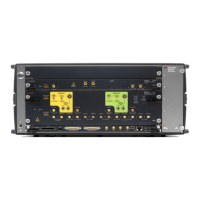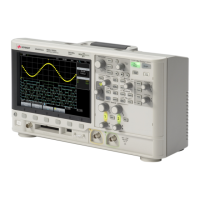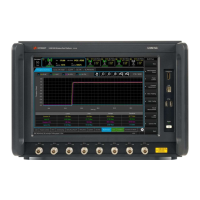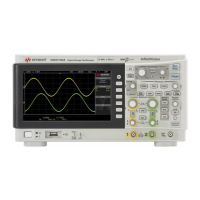348 Keysight M8000 Series of BER Test Solutions User Guide
6 Setting up Analyzer
What is False Synchronization?
For patterns other than PRBS, the Analyzer may gain sync at a point in the
pattern that meets the sync threshold, but is not the correct point where
the internal reference pattern and the received data pattern match. This is
called false synchronization.
For example, consider a pattern of 1000 ones and 1000 zeros as shown in
the following figure. With reference alignment 1 the patterns are totally
out of phase and the Analyzer is measuring 100% errors.
But as the reference moves closer to optimum alignment, the percentage
of errors gradually approaches zero (reference alignment 2 and 3). For
exact alignment, the sync threshold must be set lower than the BER
caused by a 1 bit misalignment, in this case 1E-3.
If the Analyzer is in Manual Sync mode, it is recommended that you keep
an eye on the Sync Loss indicator, present on the Status Indicator. There
are various actions that can lead to loss of synchronization. Check the
sync loss every time you make changes to the instrument.
False synchronization cannot occur with PRBS patterns because a 1 bit
misalignment would cause a measurement of 50% or more errors. Thus,
the BER during a misalignment would always be greater than the sync
threshold BER.

